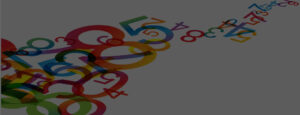Money is a strange thing. It has elusive properties that no other thing in our experience seems to have. If I have a $100 bill, I have some money. If I give it to the bank, I have money in the bank, but the bank also has the money. Did the money just double? We know that from an accounting point of view, it didn’t because the bank’s money is offset by a liability (they owe me $ 100), but that doesn’t change the fact that the bank physically has the bill, and I have $ 100 on deposit. So that brings us back to the question: how do we define “money?”
The government defines the money supply as a matrix of multiple definitions. You see them in the business section of your morning paper with designations like “M0,” “M1,” and “M2.” But what are those? That is what we will try to answer. So, by one definition of money, our $100 bill is the only “Money” involved in the above discussion, but by another definition, it has multiplied into $200 ($100 that we have on deposit, and another $100 sitting in a teller’s drawer).
Let’s start with definitions, and then we’ll explain through examples.
Definitions of money supply aggregates (U.S. Federal Reserve):
- M0 = The total of all physical currency including coinage.
- MB = M0 + money that Federal Reserve Banks have on deposit with the Federal Reserve.
- M1 = M0 – cash in bank vaults + existing travelers’ checks and money on deposit in checking accounts (this is liquid money in circulation)
- M2 = M1 + regular savings accounts, money market accounts, money market mutual funds, and certificates of deposit under $100,000.
- MZM = M2 – time deposits (this is called zero-maturity money, and represents all money that could be cashed out and used “today.”)
- M3 = M2 + certificates of deposit greater than $100,000, deposits of Eurodollars, and repurchase agreements.
- M4- = M3 + Commercial Paper
- M4 = M3 + Commercial Paper and T-bills
- L = M4 + Bankers’ Acceptances
Examples:
- Uncle Moneybags (name carefully chosen to avoid trademark infringement) has $500 cash (2 $100 bills, 2 $50 bills, 6 $20 bills, 5 $10 bills, 5 $5 bills, and 5$1 bills). In addition to this $500, he used to have two $500 bills for a total of $1,500, but the federal reserve stopped printing $500 bills, and Uncle Moneybags donated them to a museum. The money supply aggregates represented by Uncle Moneybags’ cash are: MB = $500, M0 = $500, M1 = $500, M2 = $500.
- The Scotty Dog eats one of Uncle Moneybags’ $100 bills. (MB = $400, M0 = $400, M1 = $400, M2 = $400)
- Uncle Moneybags deposits his remaining $400 into his checking account to protect it from the money eating dog. (MB = $400, M0 = $ 0, M1 = $400, M2 = $400)
- The bank keeps 10% of its cash in reserve and loans out the remaining 90% to a racecar driver, creating $360 dollars of new M1. (MB = $400, M0 = $360, M1 = $760, M2 = $760) In other words, there is still only $400 in cash in existence, but Uncle Moneybags has $400 in the bank, the racecar driver has $360 cash, and the bank has the other $40 (which is counted in MB but not in M0.)
- The racecar driver deposits his $360 at another bank (MB = $400, M0 = $0, M1 = $760, M2 = $760)
- The second bank keeps 10% in reserves and lends out $324 to the plowman. (MB = $400, M0 = $324, M1 = $1084, M2 = $1084.) Notice that the relending of deposits causes the money supply to grow much larger than the actual amount of currency in existence, but the requirements that banks keep some currency in reserve does put an ultimate limit on this growth.
- Lastly, Uncle Moneybags writes a check for $300 to cash and deposits that check unto a Money Market account. This account is part of the M2 but not part of the M1. (MB = $400, M0 = $324, M1 = $784, M2 = $1084)
What we can conclude, when answering the question of what the heck is money, is we have different measures of money depending on how broad a definition we are using. At the end of our example, there is $400 of cash in existence, but only $324 in circulation. The total money either in circulation or on deposit with banks is $1,084, but only $784 of that is fully liquid (as there may be a penalty for cashing out the money market account). Now, hopefully, when you see these numbers on the front page of the business section, they will have some meaning.
Say, “Hi,” to Uncle Moneybags the next time you are in Atlantic City.
